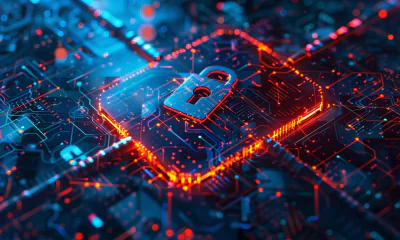Cybersecurity
Data Poisoning: Is There a Solution?

Data sets are the foundation for AI. Data allows AI to make decisions and analyze trends because they have numerous data points to reference for deductive reasoning. However, data poisoning has entered the cybersecurity scene to ruin AI algorithms in an attempt to sabotage the work humans have done to perfect their accuracy.
With data poisoning being a relatively new phenomenon, has anyone invented a solution yet to combat it? Can traditional cybersecurity methods be used to create defenses while analysts adapt?
What Is Data Poisoning?
Data poisoning is when hackers successfully feed data to AI to create vulnerabilities. AI cannot predict accurately if the data sets are corrupted – this is how spam emails get marked as worth reading and your Netflix recommendation feed gets confused after you allow friends to use your account.
Sometimes this is because AI and machine learning have not had enough time to develop. Sometimes, in the case of data poisoning, it’s because hackers feed AI models curated information that benefits their cause and warps the logic of your trained AI.
AI models for companies can do everything from analyzing reports to responding to live customers automatically. Most AI engages in active learning to obtain more data while human workers perform regular tasks. At this stage, it wouldn’t be challenging to take advantage of budding systems while they still lack information.
How Effective Is Data Poisoning?
If dangerous emails containing phishing scams appear in your inbox with reliable language and a convincing signature, it’s easy to accidentally give away your information.
Some suggest data poisoning could have been inspired by how hackers traditionally take advantage of a lack of employee training in cybersecurity practices. If a company’s AI is in its infancy or untrained, then it’s just as easy to exploit as if it were an employee unknowingly responding to a phishing email.
The reason data poisoning is effective is that it takes advantage of that lack of awareness. It becomes versatile in appearance and execution by:
- Rewriting a chatbot’s language tendencies to speak differently or use offensive language
- Convincing algorithms to believe certain companies are performing poorly
- Sampling viruses against malware and antiviral defenses to convince it that safe files are malicious
These are only a few examples of AI uses and how poisoning can disrupt operations. Because AI models learn diverse skill sets for different kinds of implementations, the ways hacker AI can poison them are as vast as their uses. This means the solutions to heal them could be just as extensive.
How Much of a Threat Is It?
Enterprises from Fortnite to WhatsApp have had user information compromised due to lackluster security systems. AI could be the missing ingredient needed to reinforce security, but it could also invite hackers to poison data while it learns, leading to further and worse breaches.
The impacts of poisoned AI are severe. Imagine being able to circumvent a network’s security measures by infecting it with a simple input. A poisoned AI subverts a company’s AI defense, leaving chances for hackers to strike. Once the hacker’s AI controls defenses enough, performing an attack is as easy as walking through the front door.
Since this is a relatively new threat in the cybersecurity world, analysts are creating more solutions as the threat strengthens.
The most crucial shield against data poisoning is a solid cybersecurity infrastructure. Educating yourself, whether you’re an employee of a company or running your own business as an entrepreneur, is our best defense.
There are several options for protecting your AI against poisoning attacks while new solutions continue arriving:
- Keep up with regular maintenance: Run checks on the data in the models you use. Make sure the information intentionally fed to the AI is still there, uninterrupted by random insertions that would otherwise poison it.
- Choose data carefully: Be careful from the moment you create your AI model. Ensure everything stored in it is relevant and not so compromising that it would make the hacker’s job easy to uproot your files.
- Perform aggressive tests: Penetration testing on AI models – performing simulated cyberattacks – could catch gaps in your cyber defenses.
Despite new threats appearing seemingly every week, it’s vital not to forget the security measures – such as good encryption and zero-trust frameworks – that came before to protect assets as new and emerging threats appear. Implementing these strategies will still prove helpful, even if a novel threat enters a network.
Is There a Solution for Data Poisoning?
Every new strain of cybercriminal activity provides an opportunity for analysts, employers, and enthusiasts alike to speculate on trends. Though there may not be a one-size-fits-all solution to the rising threat of data poisoning now, each recent attack is an insight into the tactics of cybercriminals, giving defenders an advantage.
Using these moments to prepare instead of worry will allow us to create more effective solutions and productively utilize resources to secure as much data as possible.














